Toyota Allion Buyer's guide review
Toyota Allion is a familiar sight to any Sri Lankan. Everyone must have seen an Allion or at least have heard of one. The Toyota Allion and Toyota Premio are twin models manufactured by the Toyota Motor Corporation, as the successors of the Toyota Carina and Toyota Corona. Both the Allion and Premio are compact sedans with small design differences in their exterior and interior. If not, they are essentially the same vehicle at their core. The Allion is well-known for its reliability, comfort, practicality, and smooth performance. It also has a more youthful and dynamic appeal than the Premio, which is why Allion is considered to be a sporty or executive-type vehicle.
The name Allion derives from the phrase "All-in-one", reflecting its purpose of delivering reliability, affordability, options, comfort, and space in a single package to its users. On the other hand, "Premio," as the name suggests, implies premium quality and features, promising a higher level of luxury and sophistication for its users. These twin models, despite having only two generations thus far, have left a lasting impression since their inception. The first generation is from 2001 to 2006, and the second generation is from 2007 to 2021. Imagine how good a car should be to be produced for over fourteen consecutive years. Throughout the second generation of the Allion, several facelift models with minor adjustments were introduced to the market, maintaining its relevance and competitiveness. In this article, we'll delve into the history, design, and user experience of the Toyota Allion 260 model.

Figure 01: The front-exterior view of a 2014 Toyota Allion 260 car.
History
Toyota Allion made its debut in December 2001 as a compact sedan, quickly captivating the attention of younger buyers. Compared to the last generation of Toyota Carina, the wheelbase and the height of this vehicle were increased, ensuring it had a spacious interior. It was offered with 1.5-liter, 1.8-liter, and 2.0-liter engines, including efficient four-cylinder DOHC variants. The 2.0-liter variant boasted a Super CVT automatic transmission system, while others were equipped with Super ECT transmission systems. In 2004, Allion underwent a restyling with the introduction of the LED taillights. The driving experience of this model was said to be smooth, responsive, and safe, with the help of its Anti-lock Braking System (ABS). And it was vastly used by taxi drivers, law enforcers, and businesspeople.
The second generation of Toyota Allion debuted in June 2007, featuring a brand-new facelift that evolved over time. Initially, it had the free facelift model from 2007 to 2010, then the first upgraded facelift model in 2010, and in 2016, the second facelift model of the second generation of Toyota Allion was released. The mechanical structures and components of that model were similar to the Premio, but it still had its unique sporty appearance. It had smart entry and smart screen options, a rear-view colored monitor, along with a hard disk navigation system. It was also offered with 1.5-liter, 1.8-liter, and 2.0-liter engines, which had efficient four-cylinder DOHC variants. The second-generation Allion had 20% better fuel economy and fuel consumption standards. Unfortunately, on the 1st of December 2020, Toyota Motor Corporation announced that the Premio and Allion brands would be discontinued from March 2021.
Engine and Performance
Coming to the engine compartment of the Toyota Allion, most models in Sri Lanka has a 1.5-liter inline four-cylinder naturally aspirated petrol engine named 1-NCFE. But apart from that, 1.8-liter and 2.0-liter engine models could also be seen in Sri Lanka. It has a displacement of 1797CC with a compression ratio of 10.0. Generating a maximum power of 109 horsepower at 6000 RPM and a maximum torque of 141 Nm at 4200 RPM, it ensures a dynamic driving experience. Due to the design and noise reduction techniques of its CVT gearbox, this engine model is known for being extremely quiet. The driver can expect an exceptional performance and a smooth acceleration from this vehicle, along with an effortless maneuverability at low speeds.
The Toyota Allion comes equipped with a spacious 60-liter fuel tank, which can provide you with an impressive fuel efficiency of 18-20 kilometers per liter during long journeys. However, fuel consumption is subject to driving habits and conditions. An average fuel consumption of 8-12 kilometers per liter could be expected within a city during the rush hours. But on outstation routes or highways, an average fuel consumption of 10-24 kilometers per liter could be expected. Annual servicing costs for the Toyota Allion are estimated around 30,000 LKR, but this figure may vary based on factors such as choice of service station, type of oils used, and the current condition of the vehicle.
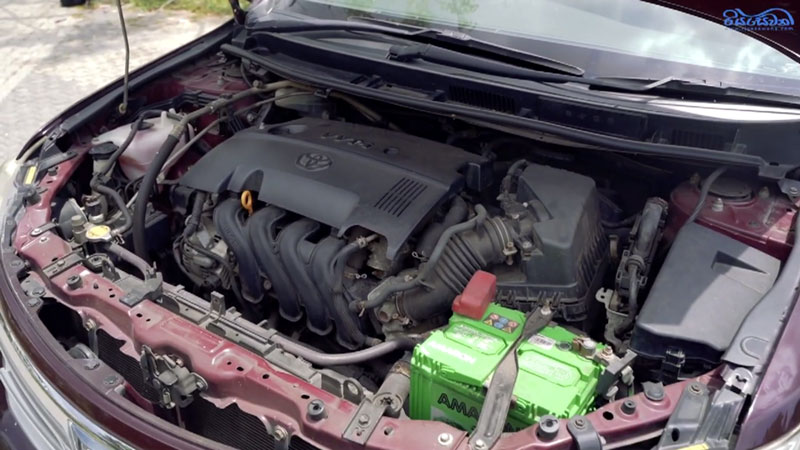
Figure 02: The engine compartment of the 2014 Toyota Allion 260 car with a 1.5-liter inline four-cylinder naturally aspirated petrol engine.
Exterior
When it comes to the exterior, this vehicle has a sedan-type exterior with 4565 x 1695 x 1475 mm dimensions and a wheelbase of 2700 mm. It weighs around 1230-1415 kg and has a minimum ground clearance of 160 mm. Compared to the Premio, the Allion has a more sporty, aerodynamically efficient, and modern exterior design.
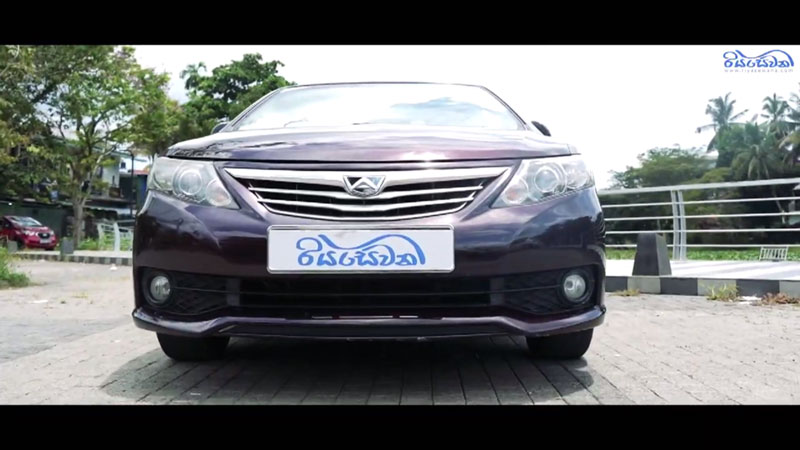
Figure 03 The front exterior view of the 2014 Toyota Allion 260 car.
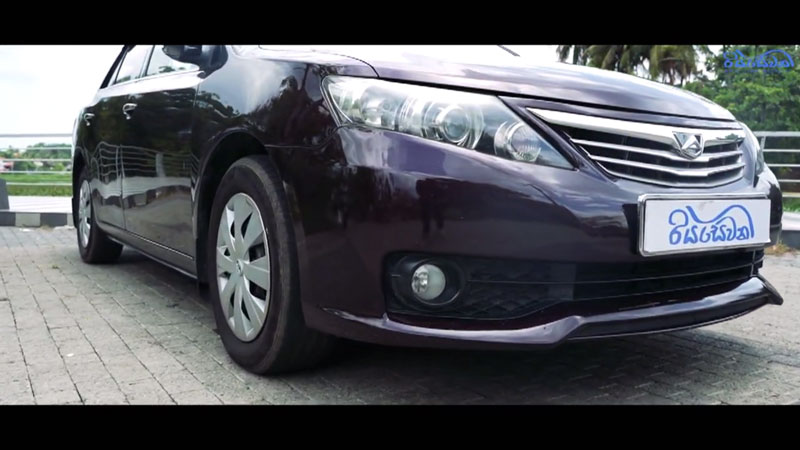
Figure 04: The side exterior view of the 2014 Toyota Allion 260 car.
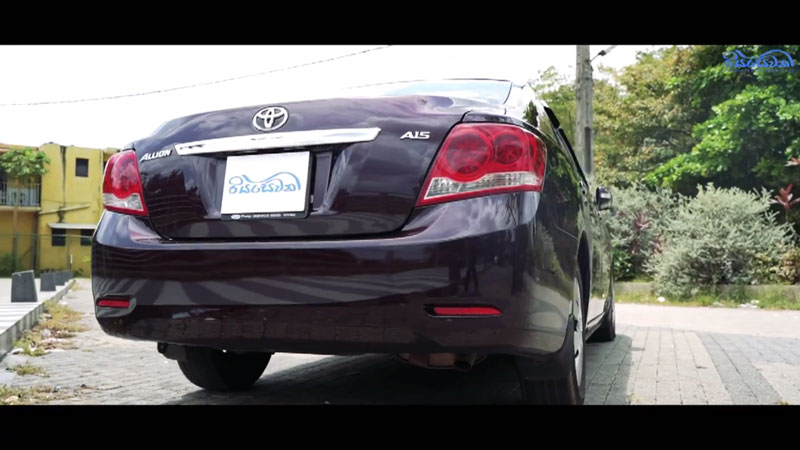
Figure 05: The rear exterior view of the 2014 Toyota Allion 260 car.
As shown in the figures, Toyota Allion shares a familiar yet captivating exterior design. It has factory-made blackout LED headlights, which are exclusive to the first facelift model. At the forefront, A bold grille with a chrome and matte finish could be seen. It has the Toyota emblem in the middle, which adds a touch of elegance to the whole structure. The vents are located below the grille and some of them are covered with a stylish metal mesh. It has these powerful fog lights which could be very useful during late-night drives. The front bumper has a nice design and the same color scheme as the vehicle. To ensure the protection of the bumper from any possible scratches or damage, the use of transparent stickers is always recommended.
This vehicle has 15-inch Toyota rims, and when it comes to the suspension system of this vehicle, it has a McPherson suspension system in the front and a torsion beam suspension in the back. Compared to the 2007 model of the second generation, these 260 models have a better suspension system with increased passenger comfort. This car has good stopping power with its ventilated disc brakes in the front, drum brakes in the back, and the 4-way Anti-lock Braking System (ABS). These systems ensure the ability of the driver to stop the vehicle in an instant without slipping. Furthermore, it has winker mirror and keyless entry options available on the doors.
The back of this vehicle has different taillights from the free facelift model, which we call the flower design in Sri Lanka. Also, a chrome Toyota badge, model name, and a chrome stripe can be seen on the boot lid. Two reflectors can be seen on each side of the rear bumper, and the hidden exhaust provides a clear look at the back of this vehicle. The boot can be accessed by using the key or the button found on the boot lid. It has a 60-liter boot space that accommodates 275 kg of cargo weight. The spare wheel and the toolkit of this vehicle are stored below the boot space.
Interior
The interior of all Toyota Allion vehicles adheres to a standard design, but according to its trim level, production year, and facelift, some features could be slightly different. A wooden texture could be seen on the dashboard, steering wheel, and the doors of this vehicle. Also, the overall interior is a mixture of beige and ash colors. However, the material used in the interior seems to be a huge dust attractor. All four doors have the power shutter option available, and the mirror controls are positioned next to the steering wheel, along with the start-stop button of the push-start feature. The gauge cluster of this vehicle has a very stylish design, featuring an analog speedometer and RPM meter, with a digital screen in the middle to show you the current gear, fuel level, temperature, mileage, and all the other details, ensuring the drivers stay informed.

Figure 06: The interior view of the 2014 Toyota Allion 260 car.
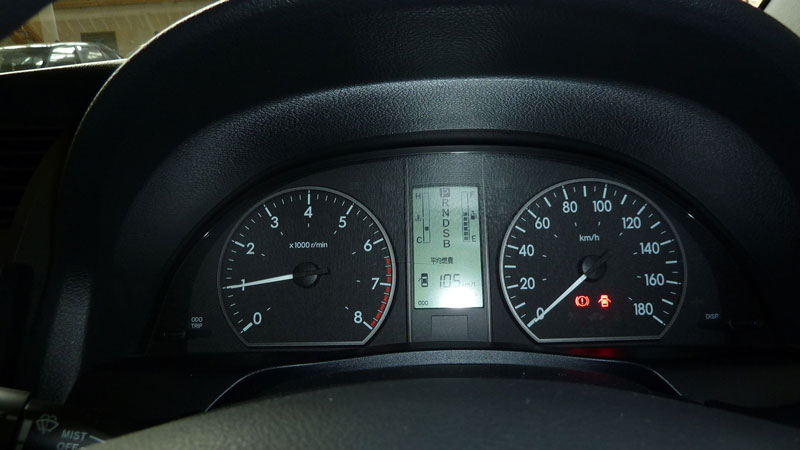
Figure 07: The gauge cluster of the 2014 Toyota Allion 260 car.
The Toyota Allion features an adjustable and multifunctional steering wheel, providing easy access to the various features of this vehicle. The buttons on the left-hand side of the steering wheel allow you to control the multimedia system, while the buttons on the right-hand side allow you to control the digital screen in the gauge cluster. The controls in the center console are so direct that almost anyone can understand those controls by looking at them. There are several storage compartments in the interior to keep your belongings organized and within reach. It has a classy stubby gear lever, but its positioning seems to be odd since the driver has to lean forward from his relaxed seating position to change the gear. This vehicle provides good headroom and legroom for the driver and all its passengers, and it has enough space to ensure a comfortable journey for five passengers. And the comfort of the seats can always be improved by customizing them after purchase. It has an overall spacious interior that prioritizes comfort and functionality.
Driving and User Experience
The Toyota Allion delivers a smooth, responsive, and comfortable driving experience with excellent visibility. The long hood of this car gives you a clear perspective about keeping your distance when it comes to navigating in traffic or parking the vehicle. The seating position is very comfortable, and all the mirrors provide you with a clear visibility of your surroundings. Even though this is a sporty-looking vehicle, it offers a luxurious ride feel. The engine provides adequate acceleration for confident overtaking on highways, and the suspension system absorbs bumps and other imperfections of the road, maintaining a high degree of comfort for its passengers in any road condition. The gauge cluster indicates good fuel consumption with its eco light, which means you can have a good mileage in your journey if you manage to keep that light turned on. With its 10.6 m turning radius, a driver can effortlessly maneuver this vehicle in any space.
When it comes to the safety measures of this vehicle, it has a range of advanced safety features including dual front airbags, ABS with EBD, vehicle stability controls, traction controls, and a cutting-edge collision avoidance system which was proven to be successful during extreme situations. Some models also feature a review camera and a touchscreen infotainment system with Bluetooth connectivity options to enhance the user experience. In conclusion, Toyota Allion ensures a convenient and enjoyable driving experience for its occupants.
Allion T240 Variant
Toyota Allion T240 is a first-generation variant of the Toyota Allion, which made its debut in 2001 and was discontinued in 2007. It had the same exterior features as the Allion 260, except for its brand-new LED headlights and fog lights. It had the same engine variants as the Allion 260 which seemed so powerful at that time. Due to its performance, features, and fuel economy, it became very popular among Sri Lankan users. It provided a smooth and comfortable driving experience for all its passengers thus creating a huge demand in the Sri Lankan vehicle market. But with the arrival of the second generation of Toyota Allion, it was discontinued as the international market dropped.
Since both these 240 and 260 variants of Toyota Allion are still popular among Sri Lankan users, let’s see what variant is the best fit for you if you’re considering buying an Allion. The 260 model comes with a CVT gearbox and engine options of 1.5, 1.8, and 2.0, while the 240 model has a standard 4-speed automatic gearbox with the same engine options. But if we consider the fuel consumption of these two models, Allion 260 has a better consumption due to its CVT gearbox. And the 260 model is also equipped with more advanced and updated features, with the advancement of technology. In conclusion, the 260 model will give you a more efficient driving experience, smoother ride, and better fuel economy than the 240 model.
As of March 2024, the Sri Lankan market value of Toyota Allion is around 6-12 million LKR, depending on the condition and the engine model of the vehicle. You can find the latest price with more details and cars of this model for sale from the following link Toyota Allion Latest Price
